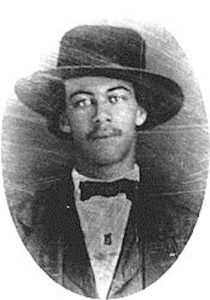
Lewis S. Leary
*Lewis Sheridan Leary was born on this date in 1835. He was a Black harness maker and abolitionist.
He was a free-born Black from Fayetteville, North Carolina. His paternal grandparents were an Irishman, Jeremiah O'Leary, and his wife of African, European, and Native American descent. His great-grandfather, Aaron Revels, was a cousin to Hiram Rhodes Revels, the first Black to serve in the United States Senate. In 1857, Lewis Leary moved to Oberlin. There, he married Mary Patterson, a Black graduate of Oberlin College.
Leary became involved with abolitionists in Oberlin, which had an active community. Later, he met John Brown in Cleveland, Ohio. In 1858, Leary participated in the Oberlin-Wellington Rescue, when fugitive slave John Price was forcibly taken from the custody of a U.S. Marshal to prevent his return to slavery in the South. Leary was not among the 37 men (12 free blacks) indicted and jailed for their actions. As a result of negotiations between state officials (who had arrested the US Marshal and his party) and federal officials, only Simon Bushnell and Charles Henry Langston were tried; both were convicted and served light sentences, partly because of Langston's eloquent speech in their defense.
Leary was one of the first recruits from Oberlin to join Brown's army. He left Mary and their six-month-old daughter Louise at home. Accompanied by John A. Copeland, Leary went to Chambersburg, Pennsylvania, to join Brown. Leary died on October 24, 1859, eight days after the attack from wounds suffered in the conflict at Harper's Ferry. After Leary's death, the abolitionists James Redpath (editor for the New York Tribune) and Wendell Phillips helped raise money for Mary and Louise Leary's support and the girl's education.